avery_tutorial_1
advertisement
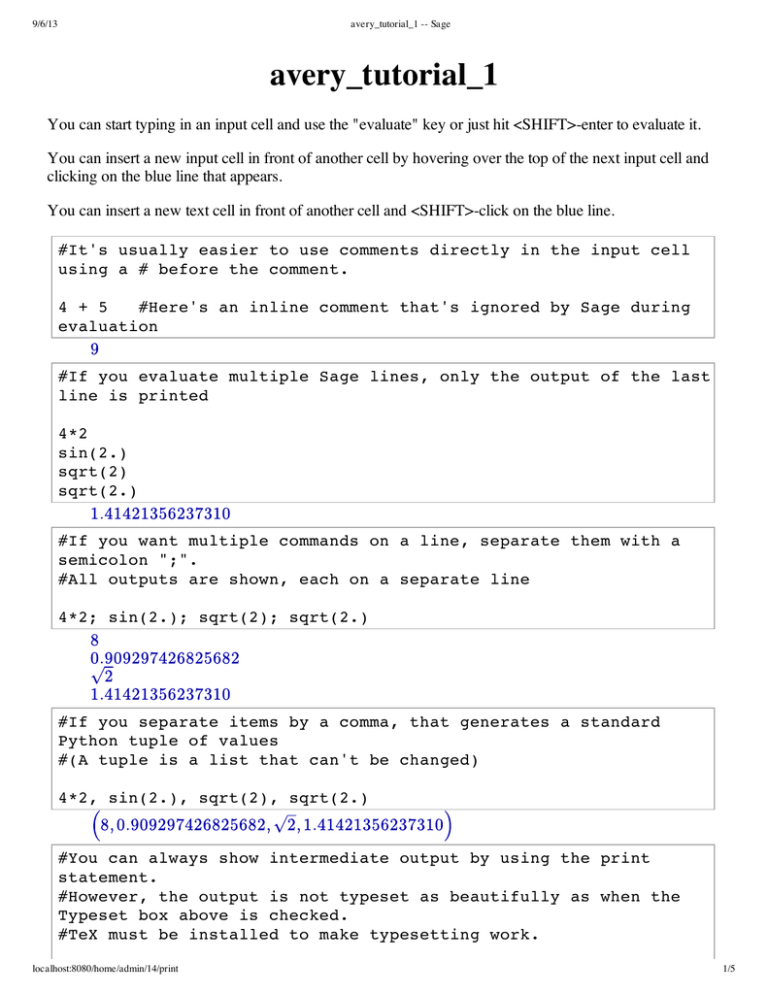
9/6/13 avery_tutorial_1 -- Sage avery_tutorial_1 You can start typing in an input cell and use the "evaluate" key or just hit <SHIFT>-enter to evaluate it. You can insert a new input cell in front of another cell by hovering over the top of the next input cell and clicking on the blue line that appears. You can insert a new text cell in front of another cell and <SHIFT>-click on the blue line. #It's usually easier to use comments directly in the input cell using a # before the comment. 4 + 5 #Here's an inline comment that's ignored by Sage during evaluation #If you evaluate multiple Sage lines, only the output of the last line is printed 4*2 sin(2.) sqrt(2) sqrt(2.) #If you want multiple commands on a line, separate them with a semicolon ";". #All outputs are shown, each on a separate line 4*2; sin(2.); sqrt(2); sqrt(2.) #If you separate items by a comma, that generates a standard Python tuple of values #(A tuple is a list that can't be changed) 4*2, sin(2.), sqrt(2), sqrt(2.) #You can always show intermediate output by using the print statement. #However, the output is not typeset as beautifully as when the Typeset box above is checked. #TeX must be installed to make typesetting work. localhost:8080/home/admin/14/print 1/5 9/6/13 avery_tutorial_1 -- Sage print sqrt(2)/2 sqrt(2)/2 1/2*sqrt(2) #Sage treats expressions as exact, unless a decimal point is used, in which case the #accuracy is that of standard computer floating point representation, about 15-16 digits. #Look at the difference between these two expressions. The first is exact and the second is approximate. 1/2 + 1/3 + 1/4; 1/2. + 1/3 + 1/4 #Or look at the following expressions. # Note that 2 - sqrt(2)^2 is 0 exactly # However, 2 - sqrt(2.)^2 is not exactly zero sqrt(2); sqrt(2.); 2-sqrt(2)^2; 2-sqrt(2.)^2; sin(1); sin(1.) #You can get the numerical value of any expression using n(), which provides standard #floating point precision. In the following, n() is used as suffix, where it is #called an "object method" pi.n(); e.n(); (sqrt(2)).n() #n() can also be used as an ordinary function n(pi); n(e); n(sqrt(2)) #You can also get an arbitrary number of digits from n() if they are specified pi.n(digits=50); e.n(digits=30); n(sqrt(2), digits=60) localhost:8080/home/admin/14/print 2/5 9/6/13 avery_tutorial_1 -- Sage #Sage has standard math constants, including I = sqrt(-1). #Google "Euler's constant" to find how it is defined. pi; e; I; 5 + 3*I; euler_gamma; euler_gamma.n(); (5+3*I) * (53*I) #+infinity is represented by oo oo; -oo; tan(pi/2) #Exponentiation is performed with either the ** or ^ operator 5**4; 5^4; #Sage has all the standard math and trig functions exp(3); sqrt(5); sin(2); cos(2); tan(2); arcsin(1/2); arccos(1/2); arctan(oo) #Even the hyperbolic trig functions are supported sinh(2); cosh(2); tanh(2); arcsinh(1/2); arccosh(1/2); arctanh(1) localhost:8080/home/admin/14/print 3/5 9/6/13 avery_tutorial_1 -- Sage #Combinatoric related quantities such as factorial and binomial are supported #binomial(N,n) = N! / [n! * (N-n)! ] factorial(6); binomial(6, 3) #The factor() function factors integers or algebraic expressions. #It can be used as a global function or object method 1035.factor(); factor(1048764); (x^2 - 5*x + 6).factor(); factor(x^4 + x^3 - 38*x^2 - 8*x + 240) #factor() can also be used to simplify algebraic fractions f = 3 + 1/(x+1) + 1/(x-1); f; f.factor() #expand() is the opposite of factor expand( (x^2-8)*(x+6)*(x-5) ); expand( (x+1)^6 ) #x is the only predefined symbolic variable that can be used in expressions. #New symbolic variables are defined using the var() function var("y z N n") #Defines the variables y, z, N and n factorial(N); binomial(N,n) #Use the subs() method to evaluate an expression with particular values for the variables factorial(N).subs(N=10); exp(-x*y).subs(x=0.60, y=2.5) localhost:8080/home/admin/14/print 4/5 9/6/13 avery_tutorial_1 -- Sage #You can also use trig_simplify() to simplify trig expressions f = sin(x)^2 + cos(x)^2 f; f.trig_simplify(); (tan(x)^4).trig_simplify() #trig_reduce replaces sin(x)^n and cos(x)^n with terms involving sin(n*x) and cos(n*x) #It can only be used as an object method, for some reason (sin(x)^4).trig_reduce(); (cos(x)^7).trig_reduce() localhost:8080/home/admin/14/print 5/5


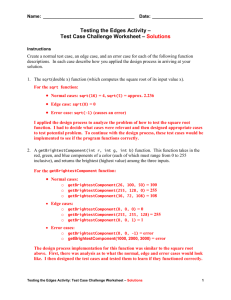
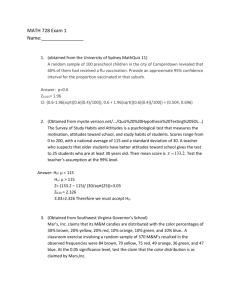
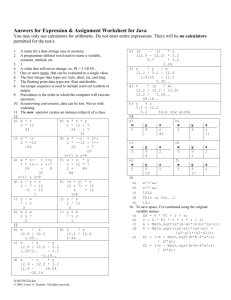
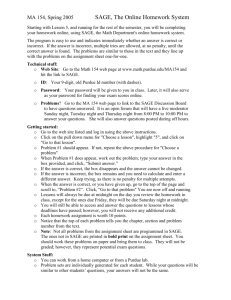
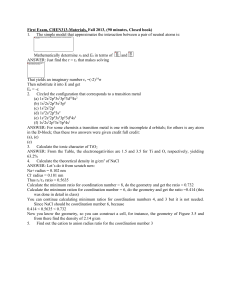
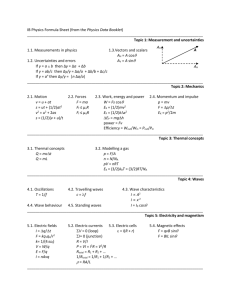
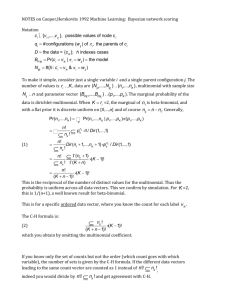
![In [1]: #This is a basic tutorial introducing you to sympy.](http://s2.studylib.net/store/data/010382181_1-662e96f8bffce484eae7cc936e2d88be-300x300.png)